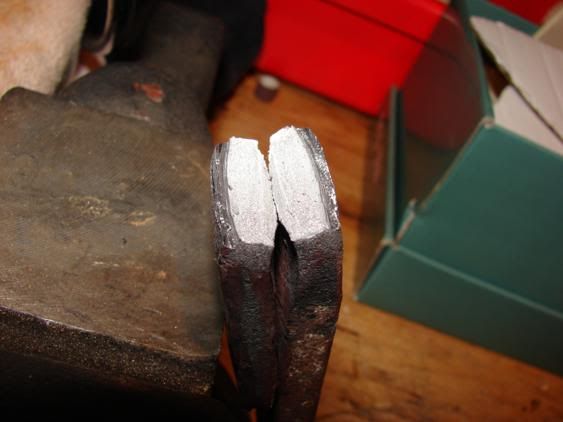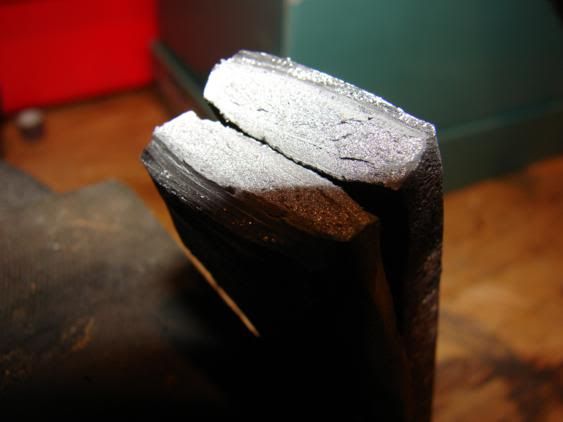zampilot
40 Cal.
Can't tell, it doesnt have the striated,stringy grain. This was sawn and bent. The dark areas are the cut.







Rich Pierce said:Good advice above. For pictures look here http://en.wikipedia.org/wiki/Spark_testing[/quote]
Spark testing is good to learn no matter what and is best done by having known steels to compare with.
On teh hand while it is generally considered that WI is under .3% in carbon it can fool you - I and others very familiar with WI (such as Rick Furrer, IMO "the man" when it comes to period steels) have had some tested out at at as much as .6% carbon which is considered high carbon.
When I get "crappy" WI such as most wagon wheel rims I generally refine it by heating and beating several times before making anything out of it - that's how double and triple WI was done.
While the outer skin of the OP's pic looks a bit like WI the break doesn't - normally WI will not snap, but just bend and striate.
